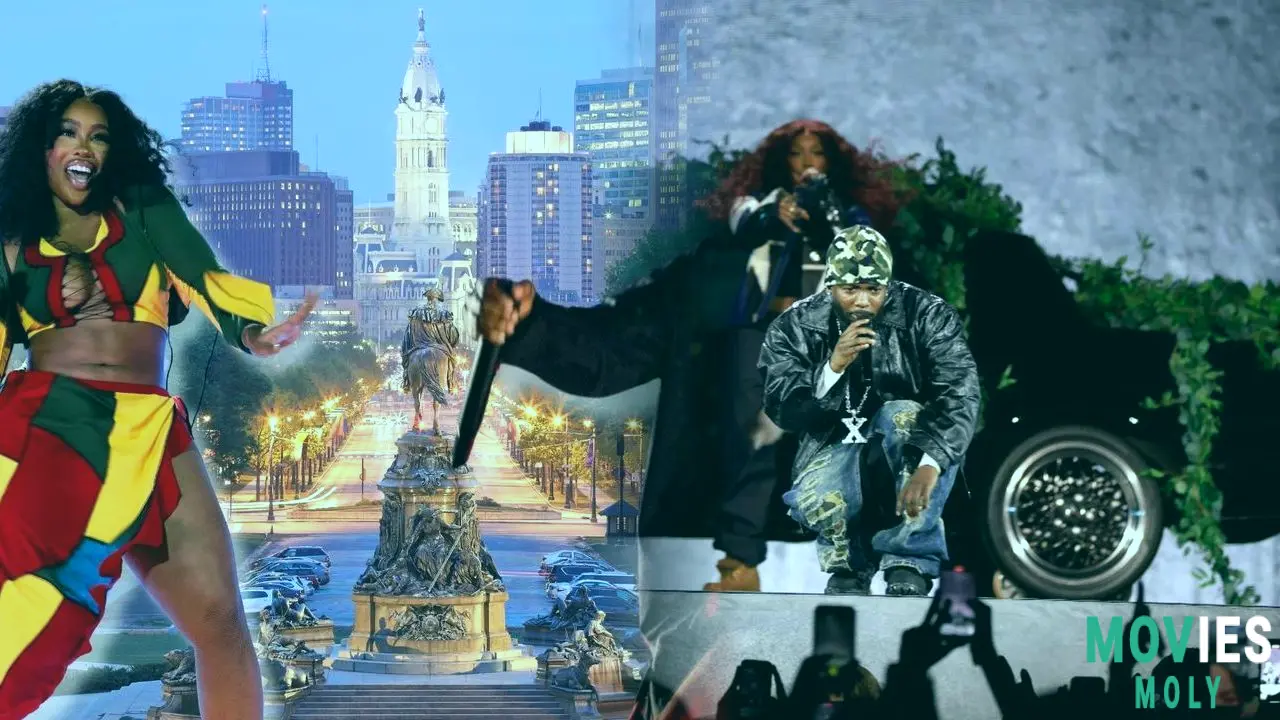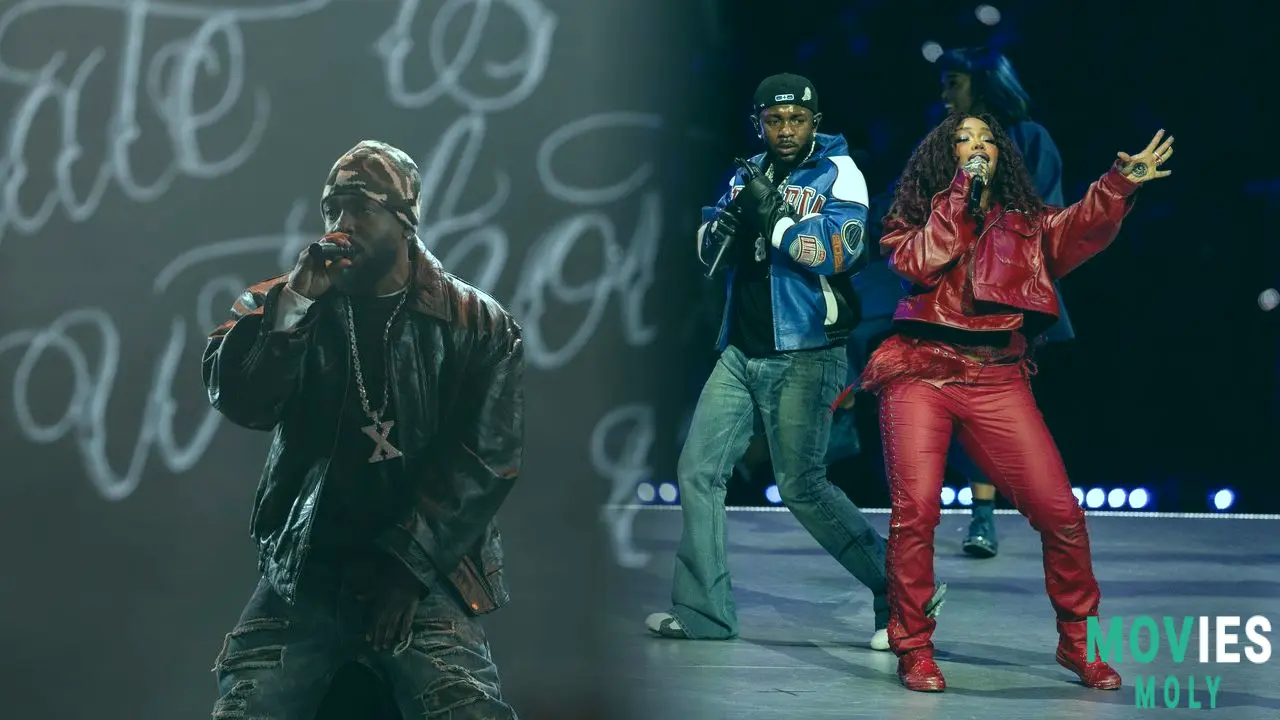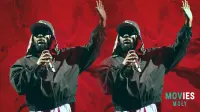Few collaborations in modern music mirror the cultural weight and artistic gravity of Kendrick Lamar and Sza. More than just frequent collaborators, the two GRAMMY-winning powerhouses have evolved into a genre-defining duo whose chemistry transcends sound and space. Their Grand National Tour, which blasted off on April 19 at Minneapolis’ U.S. Bank Stadium, isn’t just a stadium run—it’s a full-on celebration of creative evolution, mutual respect, and a decade-long partnership that hip-hop and R&B fans have craved in carnivorous anticipation.
The Grand National Tour Minneapolis Kickoff Was a Masterclass in Collaborative StorytellingWhat made the tour debut truly unforgettable wasn’t just the star power, but the way Lamar and SZA choreographed their setlists to play off each other’s energies. Instead of the traditional back-to-back full sets, they swapped the stage every 5-7 songs, creating a dynamic narrative flow that kept the crowd—split almost evenly in fandom—constantly engaged. This pacing was more than tactical; it mirrored their musical dialogue, shifting seamlessly between Kendrick’s gritty, monochrome intensity and SZA’s lush, dreamlike vibrancy.
Visually and thematically, the contrast couldn't have been starker—or more complementary. Kendrick’s scenes were urban, muted, and precise, often evoking a film noir intimacy even within the cavernous stadium. SZA's interludes blossomed into whimsical wonderlands, full of greenery, insect motifs, and ethereal lighting that turned “Garden (Say It Like Dat)” into a fantasy sequence worthy of Guillermo del Toro’s touch. Together, they didn’t just perform—they constructed a dual-universe experience, one where the grayscale of reality met the saturation of emotion.
From the Buick GNX Entrance to the Emotional Farewell Under the Stage

The show opened with cinematic flair as a Buick Grand National Experimental—buoyed by its own mythos in Lamar’s GNX album—rose from beneath the stage. Kendrick emerged, hidden behind tinted glass, delivering “Wacced Out Murals” like a ghost pilot launching into orbit. The car wasn’t just a prop; it was a time machine, a symbol, and a persona. When he then hit “Squabble Up” with explosive energy, the crowd ignited in unison, already aware they were witnessing something meticulously crafted yet viscerally raw.
One of the most striking sequences came during “Euphoria,” where Kendrick channeled complex emotions through a circular catwalk. His delivery—laden with lyricism and layered meaning—addressed personal grudges without letting the performance devolve into venom. It was a tightrope walk, and Lamar nailed it: expressing pain without being consumed by it.
SZA’s entrance with the same GNX car, now overgrown with vines, felt like nature reclaiming steel. Her “30 for 30” duet with Kendrick was a spark to the ignition—an anthem of confidence and chemistry that turned the stage into a battleground-turned-playground. The visual language of their performances spoke volumes: where Kendrick’s dancers moved in militaristic precision, hers floated like free spirits. It was a dialogue in motion, and every step was intentional.
Their Shared History Turns Every Song Into an Origin Story

Watching Kendrick Lamar and SZA perform together in 2025 is like reading two legendary comic book characters who’ve teamed up across multiple universes. Their musical alliance dates back to SZA’s “Babylon,” where Kendrick’s spontaneous verse took her by surprise. Since then, they've leveled up, from TDE labelmates to co-headliners of one of the most hyped tours in recent memory.
“All the Stars,” their Black Panther-era magnum opus, may hold the throne for most iconic collaboration, but tracks like “Luther” and “Gloria” show a different side of their rapport—intimate, hopeful, and deeply emotional. “Luther,” in particular, has given them both their longest reign atop the Billboard Hot 100, and it’s easy to see why. The song’s dreamy devotion paired with Kendrick’s sharp storytelling and SZA’s angelic refrains creates a space where love feels revolutionary.
And then there’s “Gloria,” the bardic closing to GNX, where SZA’s interlude weaves into Kendrick’s narrative like a pen meeting its muse. Ending the show with the two of them stepping into the GNX once more—and descending beneath the stage—felt like closing the first chapter of a comic series that’s only just beginning.
Behind the Diss Tracks and Visual Metaphors Lies a Deeper Connection

It’s worth noting the lyrical complexities of the setlist. Lamar’s “GNX” album features not one, but three diss tracks aimed at Drake, yet the tour also includes “Poetic Justice” and “Rich Baby Daddy” (SZA’s delivery on the latter was a crowd-pleasing twist). Theologically speaking, this isn't just bait—it's narrative complexity. It’s like Marvel including both Tony Stark and Steve Rogers in the same scene, even though they had different arcs. Kendrick and SZA aren’t shying away from drama; they’re embracing the full spectrum of their artistic stories.
“Kill Bill”’s praying mantis imagery—complete with a screen-shot of a female mantis devouring the male—turned SZA’s hit into a gothic fairy tale. Her “Saturn” finale, ascending on butterfly wings with a dress that morphed like a cocoon, was a metaphor for transformation itself. These moments, filled with symbolism and showmanship, never overshadowed the music. They elevated it.
The Grand National Tour Is More Than a Tour—It’s a Cultural Event
Kendrick Lamar and SZA’s Grand National Tour isn’t just promoting GNX and SOS (LANA deluxe). It’s a living anthology of two artists who’ve shaped the last decade of Black music in America. It’s about where they’ve been, where they are, and where they’re going. And with talk of a potential joint album on the horizon, fans aren’t just hoping—they’re certain that the best is yet to come.
As Lamar said before “Gloria”: “This might be one of my favorite songs.” And in that moment, with SZA agreeing that it made her “wanna cry a tiny bit,” you could feel the gravity of the moment. Not all heroes wear capes. Some just hold the mic a little longer, and say what we’ve all been feeling, but better.





